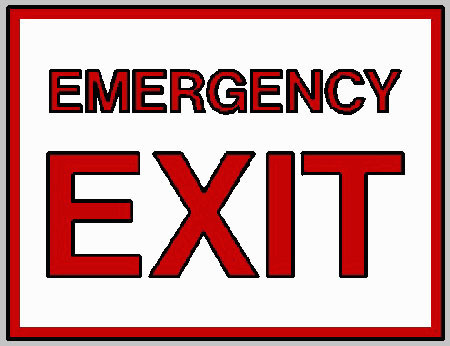We know the emergency prep basics but what would make them more universal design? The short answer is, not much. If you have a universal design environment, you’re in good shape. Where emergency planning might be more universal design is in its thorough application and in you actually being prepared.
Emergency preparedness is like flossing: we know what it is and how to do it, but, we don’t. My favorite guideline for flossing is this, floss only the teeth you want to keep. Emergency planning is the same, prepare for the lives you want to keep. Below are a few additional emergency considerations that you would consider.
Medications: Have ample supply – at least 5 days. Find out if, where and how you would get refills.
Medical Records: Your medical info, including doctors can be kept on portable media be it a flash drive, CD or even a SmartPhone. Don’t leave without this life saving info.
Outbreaks: Yikes! But, yes, they are a potential emergency that you might have to respond to. Have your masks and other protective equipment including safe practices.
Home Care: If you have home care, how does your emergency plans mesh with theirs – would they be there to help you? If not, what’s your contingency plan? Who else knows how to operate your equipment or organize your meds?
Priority Care: In some places, utility companies can register you as a priority care customer, one whose services are restored sooner typically because you rely on specialized equipment.
Evacuation: If you will have to evacuate, how far will you have to go, who will go with you, how will you go, and what accommodations will be available when you get there? Make sure enough people know you and will check in to see that you are on your way to safety. If there is time, lock up.
Go-Bag: Remember at the end of pregnancy you had your hospital bag by the door? Same thing, it’s a bag with essentials ready to go: copies of important documents and keys, cash, credit and ATM card duplicates, supply of water and food, radio, food, flashlight, batteries, appropriate cloths and footwear, contact info, medical info, hygiene, animal supplies, and personal info card.
Stay-Put Emergencies: Some emergencies are best survived by staying put. Have fuel, food, meds, water, first aid, etc. to survive 5 days or more.
Meeting Points: Prearrange meeting points with families, friends and caregivers. Have a nearby point for local emergencies and far away ones when escaping larger disasters such as hurricanes. Leave a trail, meaning, make it possible for others to find you by leaving messages. If heading for a disaster shelter, bring everything; if that’s not possible, bring any special equipment or medicine.
Egress: Maybe you can only use one entrance because another one has become difficult or impossible. If a disaster blocks one entrance, what are your alternatives? Make sure you can get out fast; practice. Get that non-functioning entrance to work. For office and apartment buildings, not only learn the evacuation procedure but take advantage of building and floor marshals by alerting them to any special needs (or your willingness to look after someone else). If you can’t get yourself out, have a refuge spot where it’s safer to wait until help arrives.
Communication: Don’t count on that cell phone. It might work, but what’s your contingency plan if it doesn’t? If it does work, how will you keep it charged? Have a radio; either have lots of batteries or a hand-crank model (some can charge a cell phone). Stay tuned!
Fuel: Have enough. For a generator, have at least 5 days – more if you are in an excessively cold or hot environment or if you depend on life supporting equipment. When evacuating, have plenty of gas for the car.
Pets: Plan for their needs. Have an info chip inserted into your pet. These are safer and more effective in reuniting you with your pet.
Nature: Do you live in a naturally volatile area? Hurricanes? Earthquakes? Tornados? Blizzards? How about volcanoes? Each poses it’s own set of survival criteria. Reach out to local resources, discover what you need to survive, and get the supplies and the plan.
Disabilities: What’s yours? What will you need? Who will help or understand?
Children: Just like the airplane, take care of your well-being first so that you are strong enough to take care of them.
Cash: Don’t count on ATM’s; have plenty of cash for an emergency.
Did I miss anything? Sure I did. This isn’t a complete list. Go local for a complete list. Check with your government resources, AARP, Red Cross and other organizations that you are connected to that either have resources or can direct you. Take notes from this list. Keep questions handy and get answers. And finally, do it – be prepared.
Konrad Kaletsch, CAPS
Universal Design Resource
Join Universal Design Network at LinkedIn

